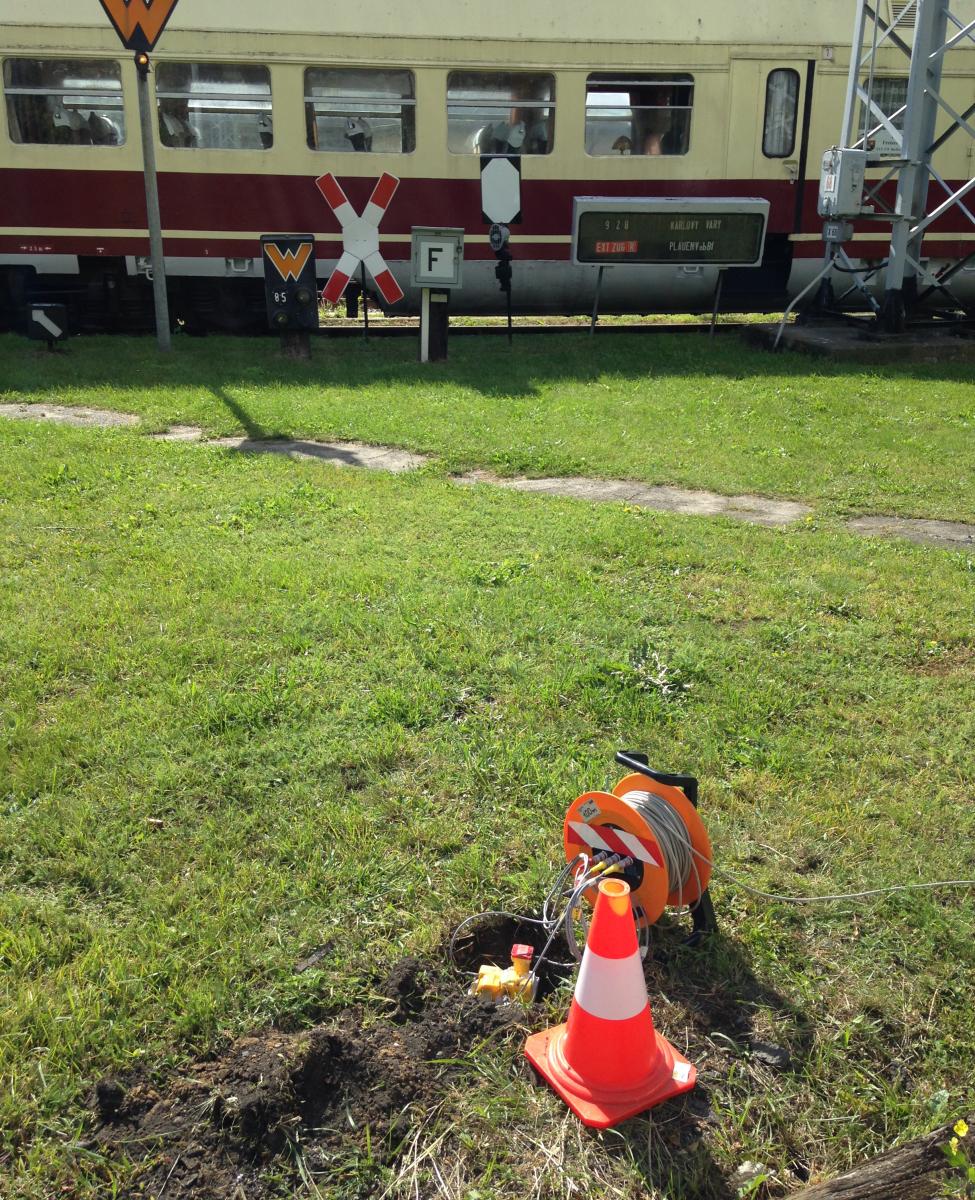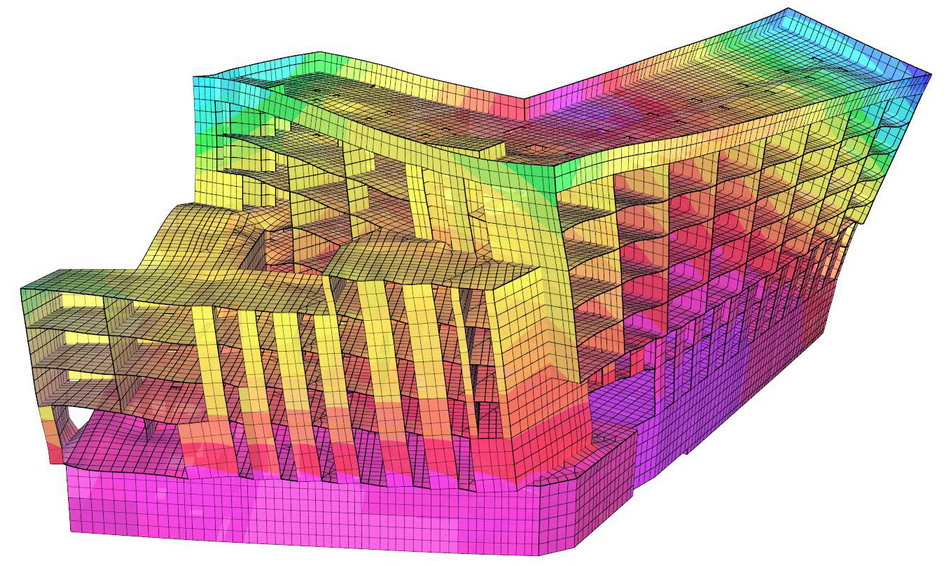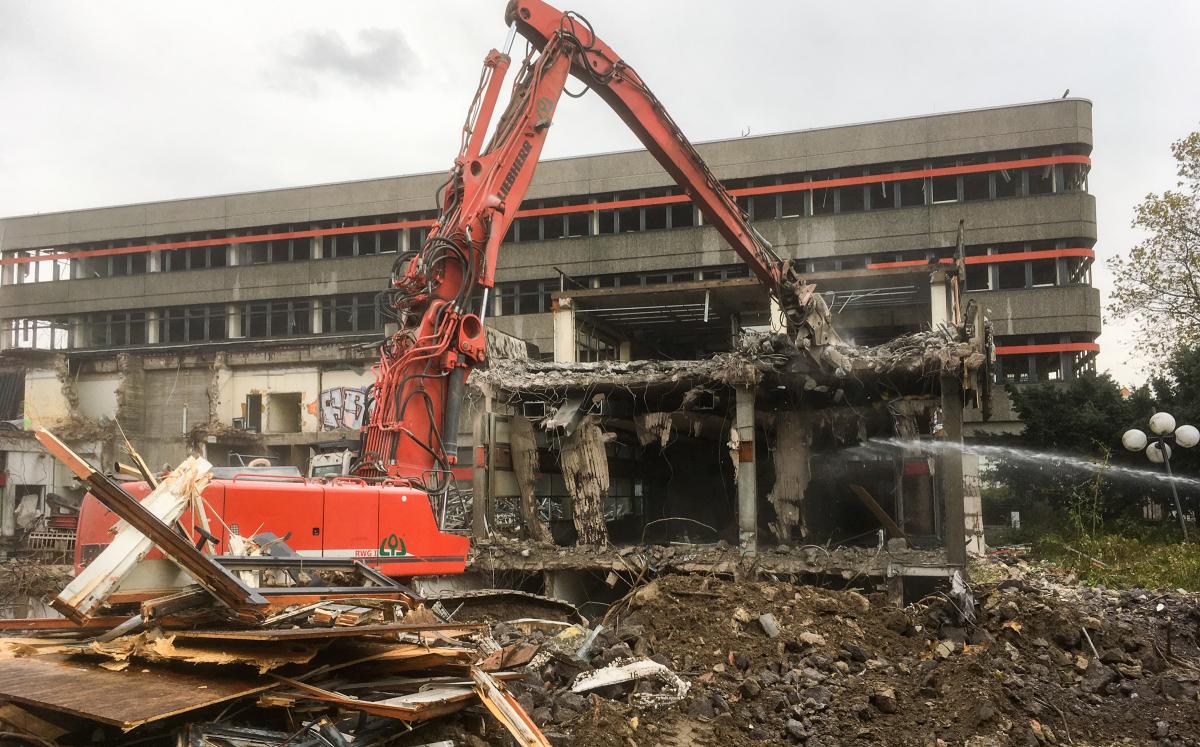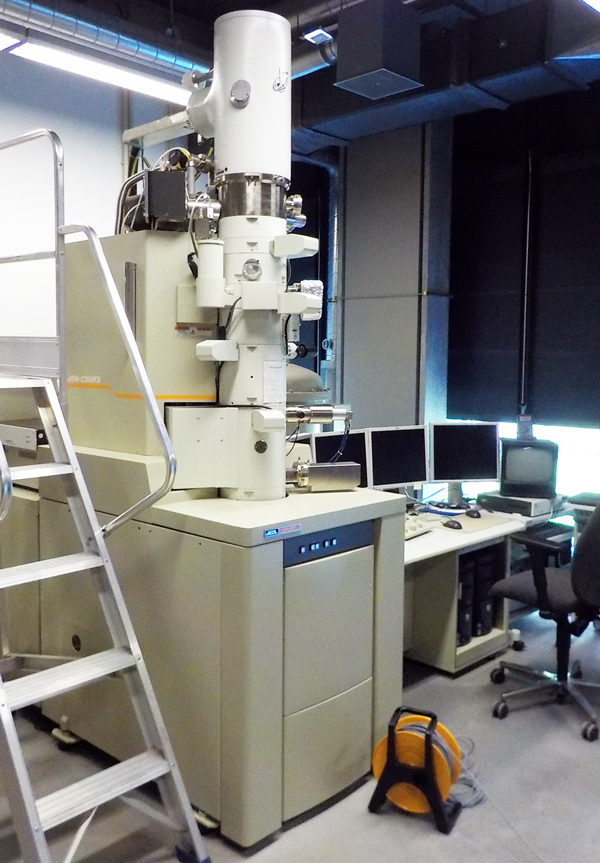Immission protection - vibration protection
Vibrations from traffic and industry will propagate into subsoil of the building lot. When transferred into buildings they often create disturbances, noticeable vibrations or low frequency noise. Effective protection against vibration immision is available through the early involvement of a structural dynamics engineer to contribute during construction planning.
GuD is accredited throughout Germany as a testing facility to determine vibrations i.a.w. Section §26 Federal Immission Protection Act (§26 Bundes-Immissionsschutzgesetz) and offers measurements, forecast calculations as well as planning and monitoring services for vibration-reducing measures.
Measuring vibrations in buildings
Traffic, construction work, commercial and technical facilities as well as sports activities are all typical sources of vibration, which can cause noticeable vibrations in buildings. On-site vibration measurements and their evaluation in accordance with the relevant standards and regulations can determine if these type of immisions are to be regarded as interferences for people. A comparison of the measured values and the reference values of the following standards will show whether vibration-related disturbances? are to be expected. The standards are:
DIN 4150-2 “Erschütterungen im Bauwesen, Einwirkungen auf Menschen in Gebäuden
(Vibrations in buildings Part 2 Effects on persons in buildings) “,
VDI 2038 “Gebrauchstauglichkeit von Gebäuden bei dynamischen Einwirkungen
(Serviceability of structures under dynamic loads) “,
and VDI 2057 “Einwirkungen mechanischer Schwingungen auf Menschen“
(Effects of human exposure to mechanical vibrations).
In addition, GuD will make an assessment of the secondary airborne noise on the basis of the “Verkehrswege-Schallschutzmaßnahmenverordnung - 24.BImSchV (24th provision of the German Federal Air Pollution Act - traffic routes and sound insulation measures), or the "Technical Instructions for protection against noise – see OSHA-EU”.
Forecast of vibration and secondary airborne noise immissions

When a new building is erected in the immediate vicinity of heavily travelled roads or railway tracks, transfer of traffic vibration through the subsoil and the foundation onto the floors, ceilings and walls of the new construction are to be expected. The vibration immissions and the radiated secondary airborne noise may be perceived as distracting by the future residents. GuD carries out vibration measurements on the free soil/ground and evaluates them to recognise any immissions very early, still in the planning phase. The obtained measurement data of the vibration- and secondary airborne noise immissions are estimated in accordance with recognised calculation methods, evaluated i.a.w. the relevant standards, and then reported with a recommendation for appropriate insulation measures if necessary.
Numerical simulations of structural dynamics

The forecast of vibration and secondary airborne noise immissions requires, depending on the situation and excitation characteristics, a decided and comprehensive technical investigation of the vibrations, while addressing all boundary conditions realistically. Such an analysis can be performed by GuD using three-dimensional finite elements models. Detailed figures of the actual support structures in the design plan will be rendered as part of the FE calculations. The component vibrations are calculated, entering the previously identified load functions into the equation. Vibration results and the emitted secondary airborne noise can be forecasted precisely for every location or each position in the building. Very effective measures to reduce vibration, either through structural adaptations of the support structure or using elastic elements can be dimensioned as needed based on those results.
Dimensioning elastic building and track supports
Elastics supports have proven themselves very practical and effective to reduce the impact of vibration. GuD examines the efficacy of elastic building supports mathematically, based on the Finite Elements Model and by using other half-space models. Two-dimensional area-covering applications below the foundation slab and on construction pit walls with elastomer mats and also hidden individual damming devices like steel spring elements or elastomer strips on the walls inside the building's storeys may be used. Various parameters of the masses and stiffness factors of the foundation slabs, storey ceilings, storey walls as well as the elastic materials are applied to calculate the optimum dimensioning. The three-dimensional model calculation takes account of the interaction between the flexible structure and its component specific vibrations and the elastic inserts required to insulate it from the vibration. Only by considering all these effects can we actually meet the objectives of effective dimensioning and insulation measures, especially with regard to cost.
Another possibility for reducing vibration immissions as a result of rail traffic is inserting elastic elements in the railway route expanses, such as sub ballast mats or under-sleeper pads. GuD offers dimensioning and planning for such measures based on the forecast results and real measuring data.
Assistance for the implementation planning of elastic building supports
GuD supports the project stakeholders in the detailed planning of flexible building supports by:
- Contacting the manufacturers of the elastic components, requesting a tender, querying test certificates, testing the products based on characteristic data about static and dynamic behaviour, as well as to the service life of the products - and then making recommendations for the choice of materials
- Examining the suppliers’ installation plans or the dynamic properties of the elastic components for the building support
- Preparation and support in defining the details relating to the layout of elastomer mats (stairs, pipes, elevators, crosswalks to the underground carpark, insulation of exterior walls, etc.)
Überwachung Umsetzung schwingungsmindernder Maßnahmen

For a vibration-reducing measure to be successful, the proper implementation at the construction site is of utmost importance. Even small errors can cause structure-borne noise bridges that can lead to unwanted, and disrupting secondary airborne noise levels in the planned building. The proper installation of elastic elements in the structure can be monitored by the experienced experts at GuD.
Forecast of structure-related vibrations
The forecast of possible structure-related vibrations before the actual construction begins is gaining ever more importance. A risk assessment of the possible effects on neighbours should be done already in the planning stage, to be able to take pre-emptive measures before construction begins. GuD maintains a large pool of data from more than 35 years of vibration measurements during a wide variety of construction activities and at the most varied of construction sites. This data set is now used to estimate dynamic excitation forces that could be discharged into the substrate during the course of any planned work. Simplified engineering models are used to forecast the vibration spread underground, as well as the vibration propagation on foundations and ceiling planes. Sometimes measurements are taken to examine the vibration propagation in the subsoil, or the vibration transfer into the neighbouring structures, using a defined vibration excitation like a drop weight or a vibration exciter.
Vibration monitoring during construction

It is to be expected that vibrations will be created, particularly during demolition and excavation works, and that these will be transferred through the subsoil into nearby buildings. These vibrations should be measured to prevent undue interference and structural risk in the neighbourhood, but also for preservation of evidence. Monitoring these vibrations is particularly important when sensitive equipment, such as IT servers, medical equipment or electron microscopes are being operated in the neighbourhood.
If the construction project is short term, the monitoring can be completed with a few hours of measuring work by the GuD team. More extensive construction projects with vibration emissions, which cannot be exactly predicted in advance, should be accompanied by continuous vibration monitoring. Permanently installed measuring equipment records the vibrations around the clock and reports critical effects immediately via mobile radio communication or a warning signal output at the construction site. Upon request, GuD can take additional causal research at that time and evaluate any problematic effects, we will then advise on how to address/remove the causes.
The measurement results are documented at regular intervals, e.g. in the form of weekly reports. The report displays the maximum vibration effects in minutes over the time of the occurrence. Special events are addressed with added numerical values and detailed vibration images.
Structural dynamics consultancy services for vibration-sensitive facilities

The requirements for failsafe vibration levels are often quite high in research institutes, in the semiconductor industry, and in optical manufacturing, as well as at other highly sensitive facilities. For example, the permitted vibration amplitudes in electron microscopy is several orders of magnitude lower what a person could even perceive. To comply with the specified or to be determined vibration specifications, studies on the vibration input into the structure and about the vibration behaviour of the support structure are required. Forecast calculations regarding the expected structural component vibrations in locations? of future sensitive facilities have to be carried out. GuD begins with the subsoil or the foundation depth and the vibration excitation values measured there, taking into account the soil and structural interaction and the planned construction. External vibrational excitations, e.g. from street and supplier traffic, as well as from internal excitations emitted by the operation of room equipment, or vibrations caused by individuals are considered. The effectiveness of vibration reducing or isolating measures are investigated with structural dynamic models.
Vibration immision from machines and technical equipment
Vibrations can be created when operating machines and technical equipment, which then can be disrupting to the people around them or even the equipment itself. Furthermore, especially strong vibration emissions can become a danger to the buildings themselves.
In such cases, GuD as a federally-recognised testing facility in accordance with Section §29b of the German Federal Immission Protection Law, can perform measurements in-situ and do a general inspection of the vibration situation. The measurement data allows them to evaluate immissions based on the relevant standards and regulations (DIN 4150-2 and 3, VDI 2057, TA noise).
The measurements can determine the causes and transfer paths of the vibrations and facilitate the planning of measures to reduce the vibration.

A vibration-insulated installation of the machine is often the best solution. Both the effectiveness of the vibration insulation as well as the resulting vibration amplitudes of the machine must be considered. GuD develops efficient measures for vibration reduction on the basis of metrological analyses and model calculations while guaranteeing full functionality and operational availability of the machines.